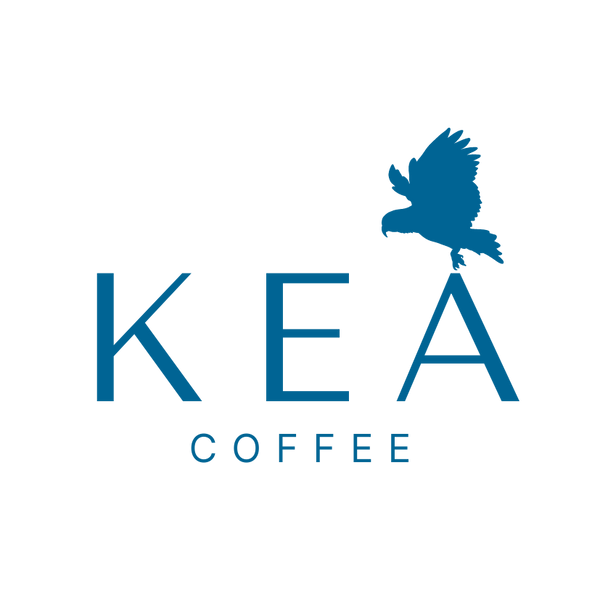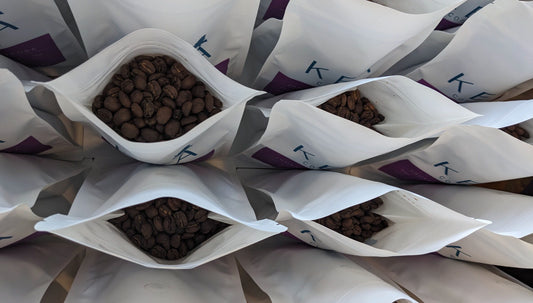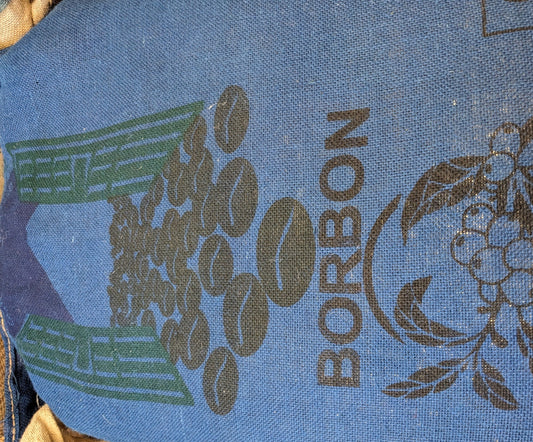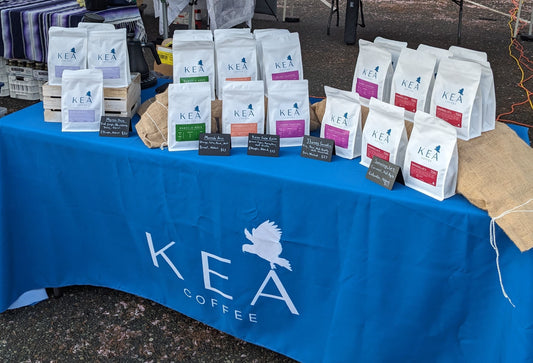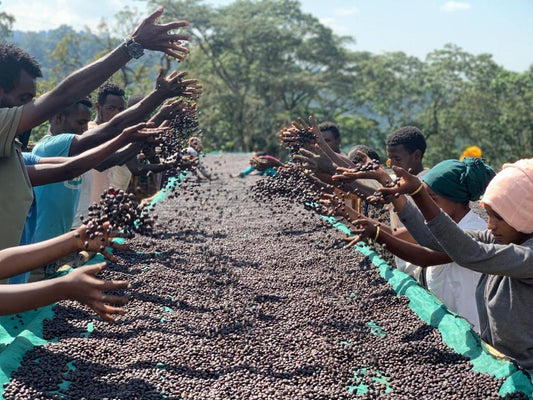Known for its clean and well balanced cups, Limu zone is an area in the West / South-West of Ethiopia which is home to some of the countries most fertile and productive terrain.
Coffee is a vitally important crop here, and many in the region rely on it either directly or indirectly.
Plot twist:
Did you know that Limu isn't really a region, in a geo or political sense? It's actually a zone defined by the Ethiopian Coffee Exchange which spans parts of 2 different Regions.
The Limu zone as defined by the ECX, covers parts of Jimma region and parts of the Illubabor region.
Limmu however, is a woreda (a district) within the Oromia Region.
Confused yet?
Welcome to the wonderfully complicated and unclear world of Ethiopian coffee!
How much coffee is produced in Limu?
Most of the coffee produced in Limu, is produced by very small and often family run farms.
Most of the farming here happens at slightly lower elevations than in other parts of Ethiopia (like the more mountainous Sidamo region, for example), usually somewhere between 1500-1800 meters above sea level. Some farms in Limu sit higher up, and there are some up as high as 2000 or even 2100m, but most production happens slightly lower down.
Granular harvest stats for the different regions in Ethiopia aren't clear, but the country as a whole is reportedly on track to hit 8.5 million bags in the 2024/5 harvest season. That would represent an increase of around half a million bags on the previous year. Some reports from the field however, suggest that Jimma (which makes up part of Limu zone) is actually on track for a slightly reduced harvest this year - down by between 5-10% year over year due to cycle changes.
Where is Limu in Ethiopia?
To answer that, we need to first take a step back and get clear on what we're talking about here.
Ethiopia has a complex system of zones and regions, and to make it even more complicated, not all parties actually agree on the same boundaries - the Ethiopian Coffee Exchange maintains their own maps, for example, which differ from the politically defined ones (which themselves have gone through a number of changes in recent history too).
As we mentioned at the beginning of this article, Limu zone is different from Limmu.
Limmu is a district (known as a Woreda) in the wider Oromia region in Ethiopia's complex and ever changing geo-political map.
Limu is a zone, defined by the Ethiopian Coffee Exchange, and designed to group together farms with closely related local landrace varietals that share common cup profiles. The farms in Limu zone span 2 different government defined regions - Jimma and Illubabor. Just to add an extra layer of confusion, Jimma is also a part of Oromia, similar to Limmu.
Limu zone is located in the West/South-West of Ethiopia.
What processing methods are common in Limu?
As with most of Ethiopia, traditional washed processing is common in Limu, however, in recent years we are seeing a growing push towards some great naturals and even some honey and more experimental processed lots too.
In the past, some parts of Limu haven't necessarily been well known for producing the highest quality lots.
But that's changing now, with many coops and washing stations investing heavily in better processing and post harvest techniques.
Many groups of local farmers are coming together to form cooperatives, and jointly invest in better infrastructure to help raise the quality (and price) of their coffees.
Washed processing remains common in Limu, but many farmers and coops are now also starting to venture further into other processing techniques too.
What varietals are grown in Limu?
As with most of Ethiopia, local landrace varietals represent virtually all production in Limu.
Most lots you'll find from Limu will be more generically labelled Heirloom or Local Landrace, however some farms are starting to push towards identifying specific varietals, and we've even seen some great single varietal lots becoming popular too.
Single varietal lots are lots where the farmer has split up all or part of their harvest by individual varietal. So instead of having an Heirloom lot, which could contain many different varietals, they separate the harvest into multiple lots each containing 1 specific varietal.
What does Limu coffee taste like? Common flavour profiles of Limu coffee
In short: balanced, and usually very clean. Often quite complex, with lots of subtle citric acidities and florals.
Growing altitudes between 1800-2100 meters above sea level, combined with plenty of tree shade makes for excellent growing conditions in Limmu. Here, coffee cherries mature slowly, developing deep and complex flavours, typically resulting in nicely balanced cups with sweet fruity and floral notes.
Coffees from Limmu typically have slightly lower acidity than in other parts of Ethiopia, especially washed processed lots. For this reason, natural processing is perhaps a little more common here than elsewhere in the country, as this type of processing helps to bring out those sweet and fruity characteristics.
Farms and producers to watch in Limu
There's quite a few notable farms across Limu zone to watch out for.
The Limu Kossa area of Limu zone in particular, is home to a couple of well known cooperatives (Shegole and Kechewo) as well as the Burka Gudina farm.
Also keep an eye out for anything from the Biftu Gudina Cooperative - their washed coffees are often standouts.
Ready to try out some great Limu coffees?
We still have a few bags of this super approachable natural processed lot from Abdul Sherif available. Expect lots of brown sugar, a nicely balanced cup and a light honeydew melon style acidity.
You can also try it as part of our Explore series, if you want to compare it to other natural processed lots from different regions of Ethiopia.
